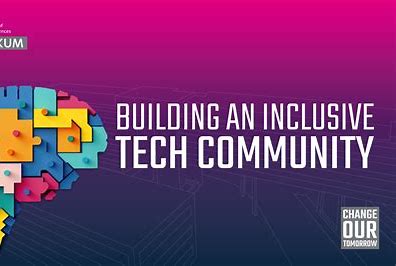Building Inclusive Tech: Why Accessibility and Representation Matter in Africa’s Digital Future
By Rebecca Aboagyewah Oppong | Veebeckz Tech Media | Published on 29th February, 2024
Introduction
As Ghana builds its digital economy — with tech hubs sprouting from Tamale to Takoradi — it’s easy to celebrate the rapid growth. But there's a deeper question we must ask: who is being left behind?
Inclusion in tech isn’t just about internet access. It’s about representation, accessibility, and equity — ensuring that girls, persons with disabilities, rural communities, and minority groups are not only users of technology, but builders and leaders in the space.
At Veebeckz Tech Hub, we believe that inclusive innovation is not charity — it’s strategy. The more voices we include in building tech solutions, the more relevant, sustainable, and impactful they become
1. What Does Inclusive Tech Look Like?
Inclusive tech ensures that:
- Tools and platforms can be used by people with different abilities
- Girls and women are encouraged to code, lead, and build
- Content is available in local languages
- Rural and low-income users can benefit, not just urban elites
- Cultural values are respected in design
It’s not enough to build an app in English for smartphones when the user base is in a low-literacy, Twi-speaking, rural community using feature phones.
2. Barriers to Inclusion in Ghana's Tech Space
Some examples of barriers
Gender bias: Girls discouraged from STEM careers due to societal norms
Infrastructure gap: Rural areas lack stable electricity and internet
Economic exclusion: Many can’t afford laptops, data, or even basic training
Language & literacy: Most platforms are English-only and text-heavy
Disability neglect: Few websites or apps are screen-reader friendly or adaptable
Many visually impaired students in Ghana still lack access to assistive tech, despite the rise of EdTech platforms.
3. What Are We Doing at Veebeckz Tech Hub?
a. Girls in Byte Initiative
We train girls aged 8–18 in coding, robotics, and AI — with mentorship, storytelling, and real-world projects. We also bring tech to schools that have never had a computer lab.
b. Tech for All – Disability Inclusion Workshops
We train designers and developers on how to build accessible websites and mobile apps. We also work with persons with disabilities to co-create solutions, not just test them.
c. Community Tech Labs
In partnership with local churches and chiefs, we’ve launched rural tech labs where access is free and classes are offered in both English and local languages.
4. Inclusive Design Principles Every African Innovator Should Know
- Design for the edges — Think about users with low bandwidth, no formal education, or different physical abilities.
- Involve communities — Don’t build “for” people; build “with” them.
- Test with real users — Before launch, let a diverse group test your product.
- Use flexible formats — Audio, video, text, pictograms — not just dense paragraphs.
- Make affordability a feature — Low-data, offline modes matter in Africa.
Remember: If your app only works in Accra or on iPhones, it’s not truly “national.”
5. The Case for Representation in Tech Leadership
It’s not just about who uses tech — it’s also about who builds it, who leads companies, and who shapes the conversation. African women, disabled techies, LGBTQ+ persons, rural developers — their presence in the innovation pipeline matters.
When girls in our Junior Byte Explorer Club see female instructors coding, it rewires their belief in what’s possible.
Conclusion
If Ghana is serious about digital transformation, we must ensure no one is left behind. Inclusive tech is not optional. It’s how we build justice, equity, and truly scalable impact. When innovation includes everyone, it benefits everyone.
Call to Action
Want to champion inclusive innovation?
Join our Tech for All Fellowship, become a mentor in Girls in Byte, or bring our workshops to your region.
Reach us via info@veebeckz.tech or explore programs at www.veebeckz.tech.
Let’s build tech that sees, hears, includes, and empowers every Ghanaian.
